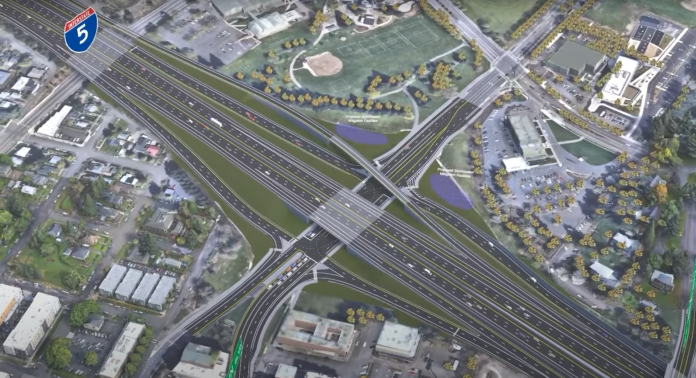
Proponents of widening I-5 and replacing the Columbia River bridge are ignoring induced demand, creating faulty traffic models that obscure environmental impacts.
The Interstate Bridge Replacement (IBR) project, the name given to the second attempt to replace and expand I-5 along a five-mile stretch between Washington and Oregon, continues to chug along, even in the face of significant transportation budget crises in both states. After months of delay, the IBR team has finally released its draft environmental review, one of the biggest hurdles left to clear before it can start construction, still targeted for sometime in 2026.
The draft Supplemental Environmental Impact Statement (SEIS) recycles much of the work produced for its predecessor, the failed Columbia River Crossing project that was officially cancelled in 2013, including the longstanding goal of alleviating traffic congestion at the bridge bottleneck between the two states. The SEIS comment period ends on November 18.
As one of the most well-funded highway projects in the country, the IBR’s SEIS is shiny, extensive, and fairly readable, at least as far as hundred-page environmental reviews go. It evaluates the impacts of expanding I-5’s six lanes to 10 by adding two “auxiliary” lanes along the length of the highway, rebuilding seven interchanges and extending light rail into Vancouver, Washington for the first time.
However, the shiny new document leaves out an essential consideration when it comes to projecting the future effects of I-5 expansion in this long-constrained corridor, an omission that would have been much less noticed in a decade ago but which sticks out like a sore thumb now. It almost completely sidesteps the concept of induced demand, which posits that additional roadway capacity will prompt more trips as road users seek to take advantage of faster trips, ultimately cancelling out many of the promised benefits that come from adding that new capacity, especially congestion reduction.
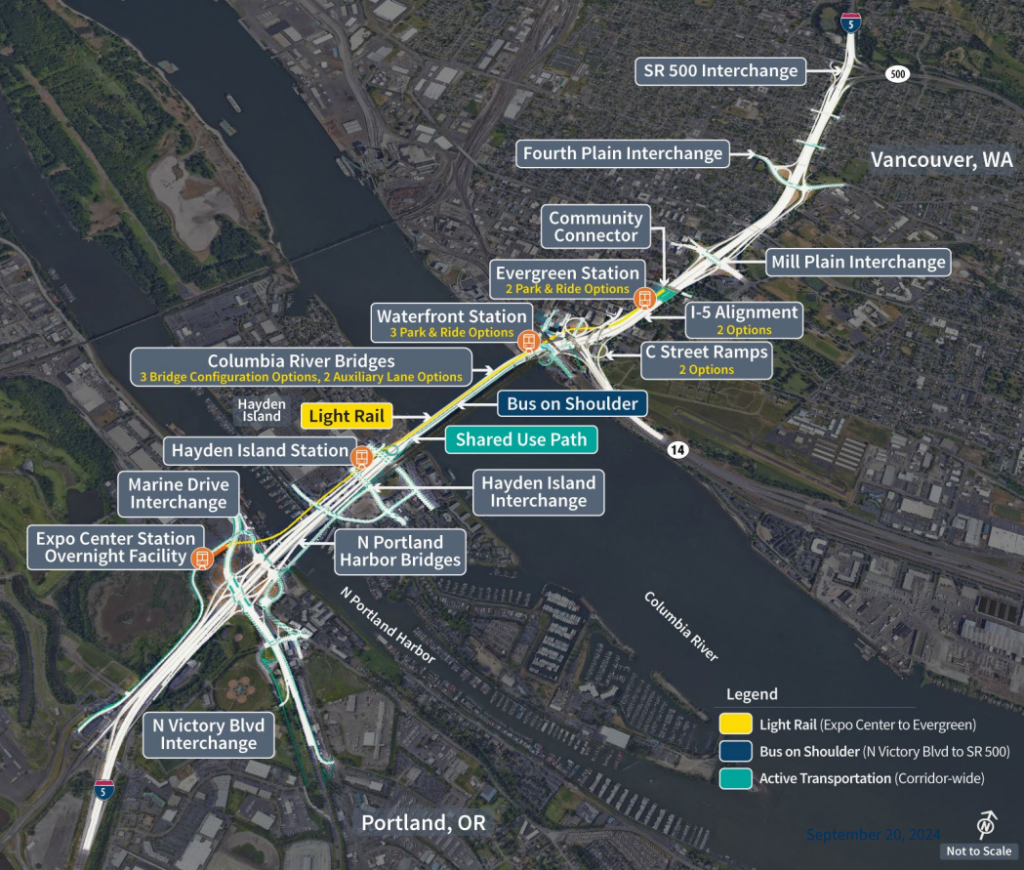
Induced demand is a well-documented phenomenon in transportation, which The Urbanist has covered before, for those seeking a primer. Individual projects have demonstrated that this is the case for 60 years, but more recently the data has become hard to ignore. A 2014 study conducted by Daniel Graham of Imperial College London, UK, looked at traffic conditions across 101 US cities from 1982 to 2007 and found that a 10% increase in lane capacity was associated with a 9% increase in traffic, independent of background growth in population and the economy.
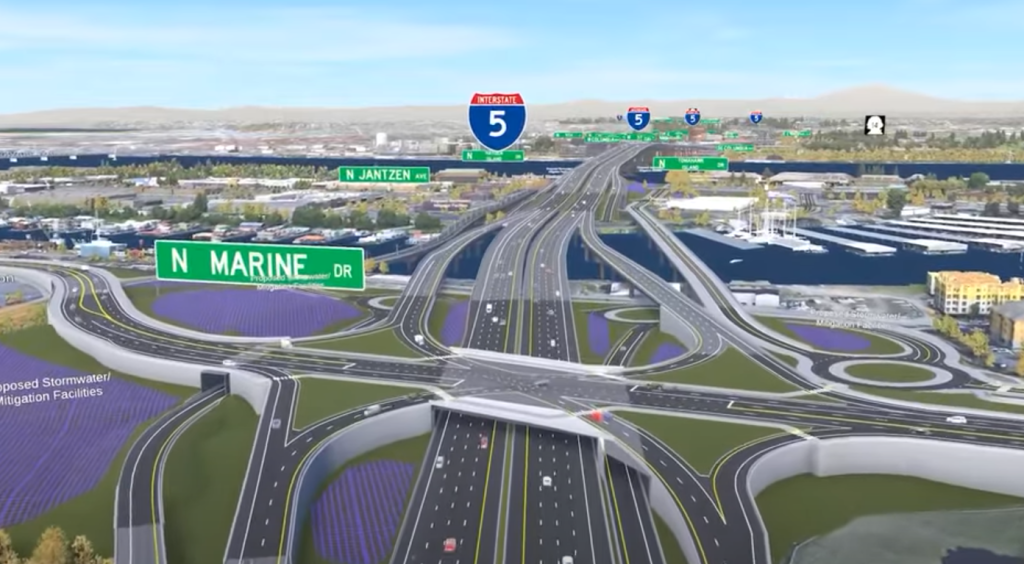
The head of the Washington State Department of Transportation (WSDOT), Roger Millar, cites the fact of induced demand every January when he gives his famous “state of transportation” presentation to the House and Senate transportation committees, noting the immense cost that comes from chasing congestion relief. Millar is not an absolutist when it comes to expanding road capacity, but has advocated time and time again for a new approach to transportation spending, even as the state legislature ultimately makes the final decisions about which projects to fund.
“Addressing congestion through adding lanes to the Interstate system is not financially feasible, it’s not economically feasible, it’s not environmentally feasible. It’s just not going to happen,” Millar told the House transportation committee in 2022, months before they approved the Move Ahead Washington transportation package, which includes $1 billion for the IBR. “We need to think about doing things differently.”
The IBR, on the other hand, sticks its head in the sand. “Induced demand” isn’t found in the index, and isn’t incorporated into the evaluation of different alternatives. The project team predicts that 11,905,000 trips would be made every weekday through the project area by 2045, whether the highway is widened to include to additional two lanes in each direction or not. If TriMet’s MAX Yellow line is extended to Vancouver, as the IBR plans to do, then 12,400 of those trips will be on transit, but the total number of trips isn’t expected to change, even as a driving trip during weekday evening rush hour between North Portland and North Vancouver is cut from 42 minutes to 26 minutes.
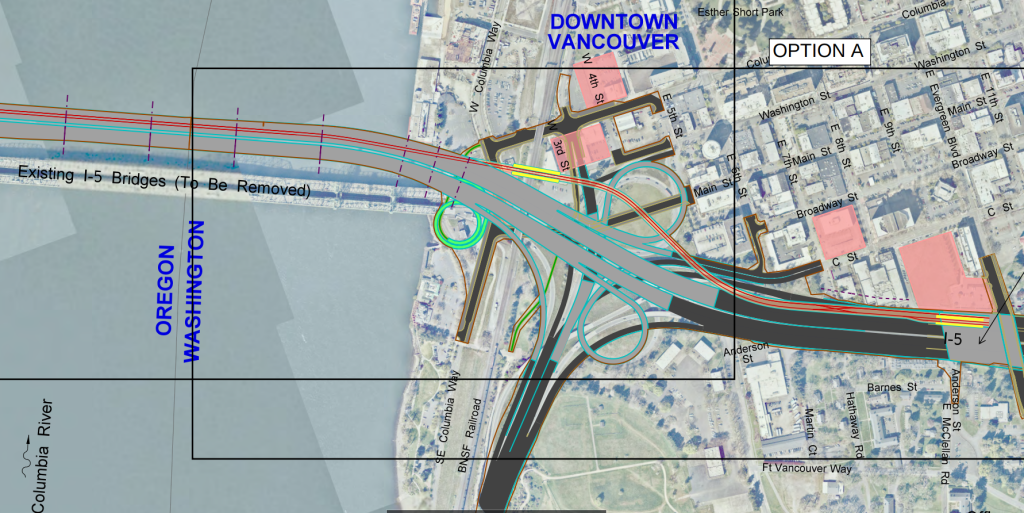
“If you look at the person trips metric, they have the exact same number of person trips in the no-build [scenario] as they do in the build scenarios,” Chris Smith, a Portland transportation advocate who has been following the IBR project for many years, told The Urbanist. “So they’re just assuming demand is constant.”
Earlier this month, at a meeting of the IBR’s joint legislative committee, which includes elected officials from both sides of the river, Representative Khanh Pham of Oregon asked the project’s managers directly about this issue, noting the models presented show no difference in trips in the corridor for one additional lane on I-5 in each direction compared to two.
“If I’m not mistaken, it does seem like it does appear that induced demand was not factored into the traffic projections, and in fact, in the proposal with the second auxiliary lane, the draft EIS says that the second auxiliary lane will not encourage any additional driving,” Pham said.
Yet the answer from the IBR team framed the issue as only having to do with land use. “We do address induced demand — the focus of induced demand in the DEIS is really looking at land use changes, and currently, our our modeling and the analysis that we’ve done is addressing the current land use that is there right now,” the IBR’s Environmental Manager, Chris Regan, replied.
Pham tried to ask a follow up question on the same topic but was shut down by one of the committee’s co-chairs, Oregon Rep. Susan McLain, one of the IBR’s biggest advocates.
Pawning the issue of induced demand off on surrounding land use is a convenient out for the IBR team, which is tasked with selling a $7.5 billion highway expansion project as a positive move for climate emissions. But the IBR will absolutely prompt changes to land use in the coming decades, as it becomes easier for residents in Southwest Washington to be able to commute to the Portland Metro area. With a more rigorous urban growth boundary in effect in Oregon, sprawl has significantly increased in and around Washington’s Clark County in recent decades, as highlighted in a 2012 report by the Sightline Institute.
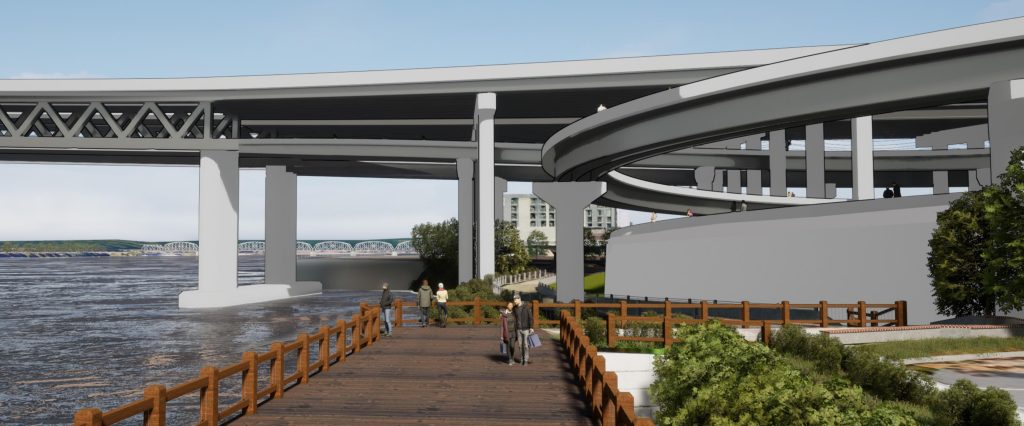
To present the IBR as a climate win, the project team is framing a 23% increase in total traffic as resulting in a net reduction in emissions largely because of a broader transition to electric vehicles that is wholly outside the project’s control. But they also cite a reduction in stop-and-go traffic as leading to future emissions reductions, another myth has has been fully refuted for years.
Researchers Alex Bigazzi and Miguel Figliozzi, working a stone’s throw from the IBR at Portland State University, presented research in 2011 showing that carbon emissions are highly correlated with vehicle miles traveled, and do not appear to be correlated at all with levels of traffic congestion. Of course, this issue is highly tied together with induced demand as well.
“We’ve seen it since Robert Moses built the Parkways: you create new lanes, and suddenly there’s all this demand that didn’t exist before, and it just fills up,” Smith said.
Beyond changes on the margins, there’s likely little stopping the IBR from moving forward, with Senate Transportation Chair Marko Liias telling the Washington State Standard this month that the project is on a “launch trajectory.” But by treating the issue of induced demand as irrelevant to the largest highway project that the Pacific Northwest has ever seen, the IBR team is setting a dangerous precedent that all but ensures that future projects will do the same.
Ryan Packer lives in the Summit Slope neighborhood of Capitol Hill and has been writing for the The Urbanist since 2015. They report on multimodal transportation issues, #VisionZero, preservation, and local politics. They believe in using Seattle's history to help attain the vibrant, diverse city that we all wish to inhabit. Ryan's writing has appeared in Capitol Hill Seattle Blog, Bike Portland, and Seattle Bike Blog, where they also did a four-month stint as temporary editor.

